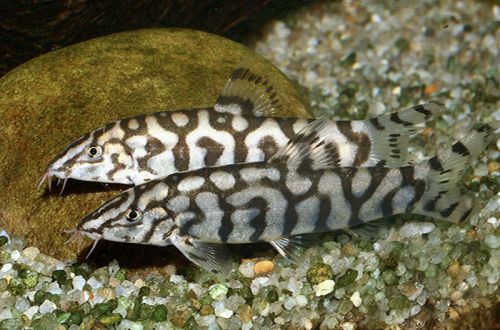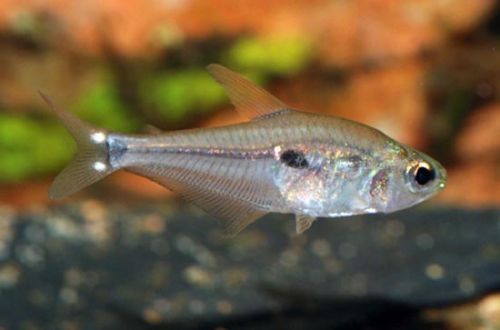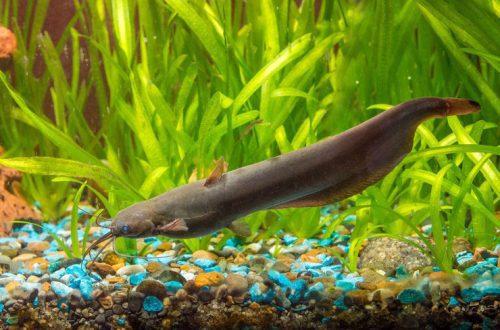
Pterolebias Orinoco
Pterolebias Orinoksky, scientific name Pterolebias hoignei, belongs to the family Rivulidae (Rivulovye). Bright annual fish. In nature, it inhabits temporary reservoirs formed as a result of river flooding in the Orinoco basin (South America) during the rainy season. It lives only about 6-7 months and during this time it manages to go through all the stages from eggs to mature fish.

The fish is named after Emil Hoigne, a collector of tropical aquatic life who made a significant contribution to the study of South American Killy fish.
Habitat
As noted above, the fish comes from the Orinoco River basin. It does not live in the riverbed itself or its tributaries, but in small puddles and backwaters that occur during the rainy season as the coastal territory is flooded. The bottom of the reservoirs consists of mud mixed with plant organic matter, clay. The water is muddy.
Description
Adults reach a length of about 10 cm. Males are somewhat larger than females, have larger fins and bright colors.

In the body pattern, faint vertical stripes can be traced, indicating a close relationship with another species – Pterolebias zonatus. At the same time, the fins are decorated with a spotted pattern. The predominant colors in the coloring are gray, pink and red.
In home aquariums, as a rule, they live for more than one year.
Behavior and Compatibility
Considered a peaceful species. In the wild, they often live with other annual Killies, where they actively compete for the limited resources available. In home aquariums with an abundance of food, they behave more peacefully.
Compatible with many other species of comparable size and temperament.
Brief information:
- The volume of the aquarium – from 50 liters.
- Temperature – 20-24°C
- Value pH — 6.5–7.5
- Water hardness – soft (5-8 dGH)
- Substrate type – soft dark
- Lighting – any
- Brackish water – no
- Water movement – little or no
- The size of the fish is about 10 cm.
- Nutrition – foods high in protein
- Temperament – peaceful
- Content in groups
- Life expectancy about 1 year
Keeping and breeding in a home aquarium
The optimal size of the aquarium for 3-4 fish starts from 50 liters. The design is arbitrary and is selected at the discretion of the aquarist or based on the needs of other fish species.

However, given the transience of the life of Pterolebias Orinoco, breeding should be the main goal to maintain the population. In this case, design elements are selected taking into account the need for spawning.
In the wild, fish lay eggs in the thickness of a soft substrate. When the reservoir dries up, the eggs are in the soil layer in anticipation of a new rainy season.
In aquariums, it is required to provide a substrate that is easy to remove from the water. For example, coconut fiber or a layer of aquatic mosses or ferns, which later will not be a pity to dry, can become such soil.
In the design, you can also use floating plants. Rooting species are preferably placed in containers (pots).
The minimum set of equipment consists of a heater, a lighting system and a simple airlift filter with a sponge as a filter material.
Comfortable conditions of detention are soft acidic water with a temperature of 20 ° C – 24 ° C. Spawning is stimulated by a gradual increase in temperature to 28–33°C.
If no breeding is planned, then raising the temperature is not worth it, as this speeds up the metabolism of the fish and shortens the already short lifespan.
An important condition for successful breeding is diet. Fish should be fed a diet rich in protein. For example, live or frozen bloodworms, brine shrimp, daphnia, mosquito larvae, etc. can become the basis of a daily diet.
The fish lay their eggs directly into the substrate. Spawning can take up to a week or more. It is necessary to constantly monitor the presence of eggs. The substrate with eggs is removed and very carefully washed from organic waste. Excess organic matter (feed leftovers, excrement) can cause mold and fungi during long-term storage.

The substrate is placed in a container with a perforated lid for gas exchange. The substrate should be slightly damp. The degree of humidity is determined experimentally. It is not possible to give an exact recommendation.
The substrate with eggs should be stored in a dark place at room temperature for 6-7 months. Then it is placed in water and after a while the first fry should appear.





